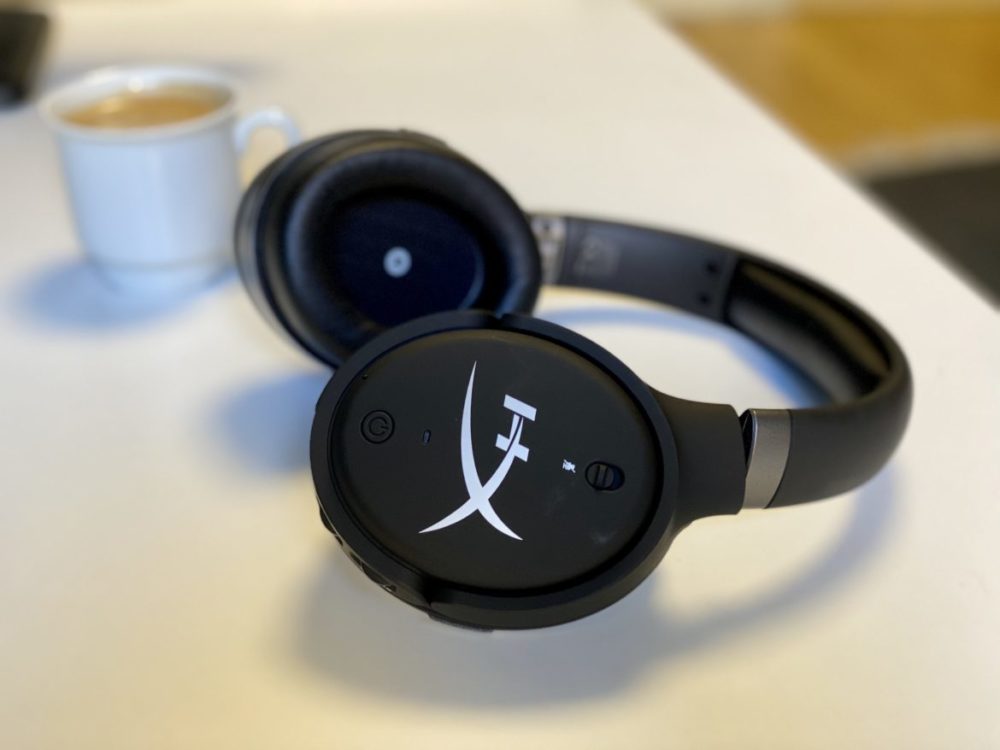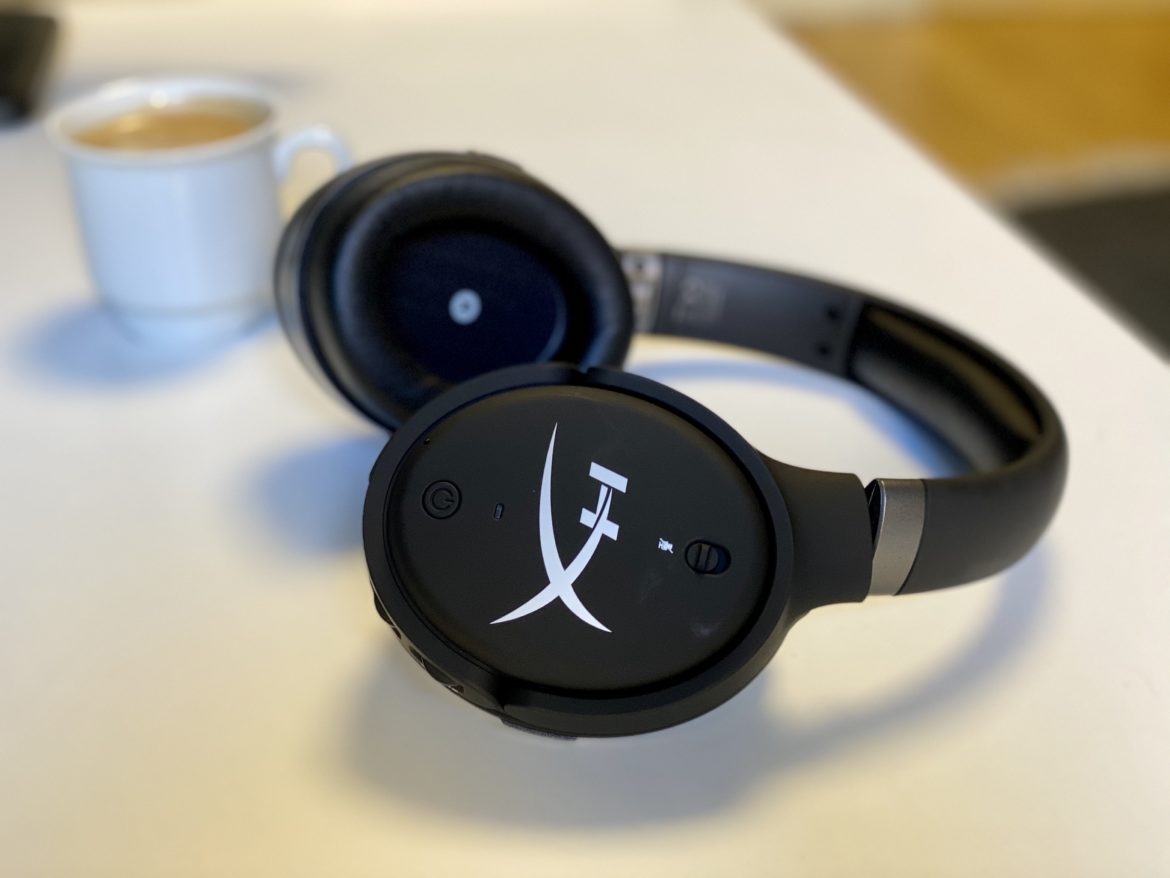TL;DR
The HyperX Cloud Orbit S headphones, built on Audeze's planar magnetic tech, deliver impressive Hi-Res audio and immersive 7.1/3D sound, rivaling high-end music gear. While the wired-only design and mandatory charging are drawbacks, the USB-C connection unlocks their full potential, offering exceptional spatial accuracy for gaming and movies. However, initial comfort might be an issue, and console gamers might find better value elsewhere. Discover if this premium gaming headset is your next audio upgrade!
While relatively young in the industry (founded in 2008), Audeze has become synonymous with high-end headphones within Hi-Fi circles. Their product range caters to a wide range of audiophiles, from entry-level models costing a few thousand SEK to reference headphones exceeding 40,000 SEK. The American company, known for its exclusive use of Planar Magnetic technology (magnetostats, based on their proprietary design principles) and its “sales list” appeal (California, ex-NASA connections), also offers a gaming headset, the Audeze Mobius. This particular model has been licensed to HyperX, resulting in the HyperX Cloud Orbit S. With a slightly reduced price point and a few features removed, we investigate the sound quality of these gaming headphones priced around 3,500 SEK.
Orbit S – Design and Ergonomics
The Orbit S shares a strong resemblance to the Audeze Mobius, featuring a “classic headphone” design with a plastic frame, memory foam padding, and leatherette earcups designed to conform to the user’s ears and head shape over time. Upon initial use, the headphones may feel somewhat tight around the head and exert pressure against the ears, potentially causing slight discomfort. However, the fit does loosen with extended use. While individual experiences may vary, our team generally found the initial fit to be on the tighter side, indicating that these may not be the ideal choice for extended listening sessions compared to the more comfortable HyperX Cloud Revolver S.

Orbit S – Connectivity Options
The Orbit S offers versatile connectivity options, with the exception of wireless functionality. This feature, present in the Audeze Mobius at a slightly higher price, is absent in this model. The headphones lack Bluetooth support, restricting connections to wired options only. While we haven’t tested the Mobius, the inclusion of a wireless option at this price point would likely be a valuable addition. The lack of Bluetooth isn’t necessarily a critical drawback for gaming headphones, as users typically remain in close proximity to their computer or console. Gamers on the Nintendo Switch will appreciate the included long USB cable. The Orbit S features a USB-C connection and performs effectively with USB-C, a USB-A-to-C adapter (the long cable), or a standard 3.5 mm analog connection. However, the chosen connection method does impact the availability of certain sound modes and features.
Immersive 3D Audio Performance
A key selling point of the Orbit S is its integrated 3D audio technology from Audeze. This system dynamically adjusts the sound image based on head tracking, simulating a realistic surround sound experience as if the listener were positioned within a fixed speaker setup. This feature enhances immersion by ensuring that sound sources remain spatially accurate, even as the user’s head moves. For example, if a character speaks from a specific direction within the game environment, the audio will continue to emanate from that direction, even as the player turns their head. This precision significantly benefits adventure and FPS games.
Despite being a wired headset, the Orbit S requires charging due to its integrated sound processor, which powers both the 3D function (which can be disabled) and the various sound modes. A discharged battery renders the headphones completely silent, which is a disadvantage. It would be preferable to have the option to bypass the sound processor and utilize a purely analog signal via the 3.5 mm connection, even without the advanced features.

The 3.5 mm connection offers compatibility with a wide range of devices (excluding certain smartphones that have phased out the port), but it also provides the most limited functionality. While the 3D function remains available, other advanced features are disabled. The necessity of charging the headphones even for analog use is somewhat inconvenient. While sacrificing 3D audio and the integrated DAC without charging would be an acceptable trade-off, the inability to use the headphones at all feels restrictive. Furthermore, the analog connection does not support charging during use, adding another factor to consider when gaming on consoles.
The USB-C mode unlocks the full potential of the headphones. In this mode, the DAC is active and charging is enabled during use. Users gain access to the full suite of features, including 3D audio and an enhanced amplifier. In addition to these features, reminiscent of Blue Microphones’ solution, users can select between three distinct sound modes: Hi-Res (high-resolution audio), 2 channel (“normal stereo”), and 7.1 (8 channels, for surround). The Hi-Res mode enables high-resolution streaming (requires high-resolution or uncompressed sources such as Tidal Hi-Fi), and operates effectively on both PC and Mac (where the headphones must be selected as the audio source in the Sound settings). PC users also benefit from a dedicated settings program that offers a more intuitive interface than the volume wheels on the headphones, which can be somewhat imprecise.

Music playback (lossless) in Hi-Res mode delivers exceptional quality, rivaling dedicated high-fidelity headphones. Magnetostats offer a clear advantage over traditional dynamic drivers, as detailed in our Headphone School, although they may exhibit a narrower range of optimal performance across different musical genres. Well-mixed and calmer music benefits most from this mode, although the headphones also reproduce deep bass with accuracy in hip-hop tracks.
The 2-channel mode is primarily intended for use with sources that do not support Hi-Res. This “normal” stereo mode is the only option currently available on consoles (more on this later).
7.1 surround sound on headphones is often perceived as a gimmick, a digital effect intended to simulate an enveloping soundscape. However, the Orbit S implements 7.1 effectively. When properly configured, the computer outputs 8 discrete channels (7 discrete channels + LFE (subwoofer)), which significantly enhances the movie-watching experience. The sound is accurately reproduced as intended by filmmakers. The integrated 3D audio further improves spatial accuracy, creating a personal 7.1 home theater experience within the headphones.

Interestingly, the Huawei P30 Pro can utilize the headphones with its built-in Dolby Atmos mode, even with soundtracks not specifically mixed for it. Netflix offers numerous productions mixed in Dolby Atmos, such as Altered Carbon. While Atmos typically requires a minimum of two overhead channels (7.1.2), the combination of 4K, HDR, and (near) genuine Dolby Atmos creates a compelling mobile home theater experience. This bodes well for travel and hotel entertainment in the future.
Modern iPhone users (iPhone 7 and later) may encounter limitations when using these headphones due to Apple’s reliance on the Lightning connector. Even with a USB-C adapter, the inherent limitations of the Lightning interface remain. The lack of a 3.5mm input and Bluetooth support on the headphones makes them incompatible with devices like the iPhone 11 without resorting to less-than-ideal solutions. The headphones may function with newer iPads equipped with USB-C, which we will explore further when a review unit becomes available.

Passive Noise Isolation
The Cloud Orbit S is relatively heavy, and the initial fit can be somewhat tight for the first 15-20 hours of use. However, this snug fit provides an unexpected benefit: effective passive noise isolation, which significantly reduces ambient sounds without the need for active noise cancellation technology.
The microphone is easily detachable and can be stored in the included carrying bag along with the cables. The sound recording quality is acceptable, with effective pop protection and a neutral EQ that avoids excessive bass or harsh treble. It is suitable for online gaming and general communication, but does not replace a dedicated USB microphone.
HyperX Cloud Orbit S – Final Assessment
The Cloud Orbit S reflects a high level of ambition, resulting in a premium product with a correspondingly premium price tag. While the cost is considerable, it is justifiable considering the underlying technology. Comparable music headphones with similar specifications often command significantly higher prices (e.g., Blue Microphones Ella). Magnetostatic drivers offer superior sound quality compared to the more common dynamic drivers, although the latter often provide a more pronounced bass response. Audeze compensates for this with a built-in EQ, enabling users to adjust the bass to their preference. In Hi-Res mode with high-resolution audio and 7.1 mode with Dolby Atmos, the headphones deliver exceptional performance, setting a new benchmark compared to competing products. While sound quality is still good for console gaming, the Orbit S does not offer the same unique advantage. Alternatives like the Audio-Technica ADG1x provide comparable stereo sound quality, greater comfort, and passive operation via 3.5mm, and are available at a lower price point. Therefore, gamers who primarily play on consoles and already own headphones for music or do not watch movies on the go may find these headphones less compelling.

The requirement for constant charging, limited battery life, and slightly uncomfortable initial fit prevent a perfect score. However, the headphones come close. For gamers who primarily use USB-C connections (common on computers and soon to be available on the Playstation 5 and Xbox Series X) and movie enthusiasts who consume content on the go (with compatible smartphones), the HyperX Cloud Orbit S represent the best option in terms of functionality and sound quality. However, comfort is a consideration. Ultimately, the decision depends on individual priorities. For our team, these headphones establish a new reference point for high-end, wired gaming headsets.
We look forward to taking them on our next trip, whenever that may be.

